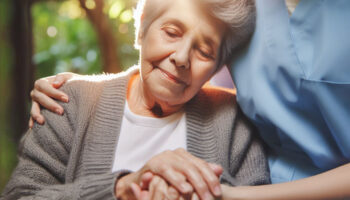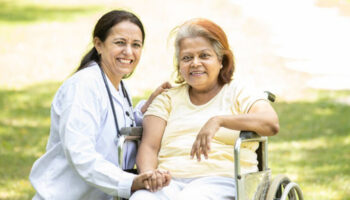India, the second-most populated nation in the world, has undergone a remarkable demographic transformation over the past 50 years, with the old population nearly tripling (Government of India, 2011). This trend is likely to persist. The percentage of Indians 60 and older is predicted to increase from 7.5% in 2010 to 11.1% in 2025. This gain in percentage terms is negligible, but the absolute amount is extraordinary. According to statistics on the predicted age distribution from 2008, India seemed to have more than 91.6 million seniors in 2010, an increase of 2.5 million years between 2005 and 2010.
The elderly suffer from more ailments than other age groups, regardless of gender or residence area, according to an analysis of morbidity patterns by age. Elderly persons require skilled nursing care for people who regularly face heart illness, circulation issues, and cancer. In wealthy nations undergoing the demographic shift, there have been increasing flare-ups of acute non-communicable diseases, the majority of which are lifestyle-based illnesses and impairments.
The epidemiological shift from contagious diseases to NCDs has not coincided with India’s accelerated demographic change, on the other hand. Elderly people in India are more prone to chronic illnesses than acute ones. In addition to communicable diseases, there is an increase in NCDs, particularly in cardiovascular, metabolic, and degenerative disorders. The majority of chronic diseases that affect the elderly are cardiovascular diseases, but they also include chronic bronchitis, anemia, high blood pressure, chest discomfort, kidney issues, digestive issues, eyesight issues, diabetes, rheumatism, and depression.
Seniors who want to enjoy life to the fullest and who have the time, money, and resources to do so perceive this age and phase as one where they can pursue the hobbies and passions, they’ve always had but were unable to due to their numerous obligations and health impairments. Here the role of caregiver now comes into play.
The core of eldercare is digital tools!
The quality of life for older individuals has improved as a result of digital adoption, particularly during the lockdown when vast metropolitan population masses were forced to make conscious digital switchover tools, even for the most basic necessities.
In the midst of unprecedented lockdown, the internet has enabled individuals to maintain a modicum of routine through medicine delivery, online shopping, and virtual travel. In no way has this time passed. Many people, especially the elderly generation who are more vulnerable, have remained holed up in the comfort of the assisted living facilities with the branches of long-term and transition care.
However, for this age today, virtual communities are the norm. These online groups communicate frequently via video to discuss a range of subjects, learn from one another, and develop new abilities including the types of care that seniors need.
This vibrant and active online community supports older folks as they navigate the difficulties of aging, particularly those brought on by the epidemic. In less than two years, the platform increased its global learner base to over 4 million. Therefore, it is clear that senior citizens are making their own area in cyberspace and having access to medical facilities by just using the internet.
What comes next?
For older folks to live fulfilling lives, resources must be available to help them gain their independence with the help of physical and rehab care. The senior care industry keeps looking for new approaches to connect with the elderly people group by making sure they have the means and information to age successfully.
Real-time data, customer insights, and caregiver training are all predicted to have a significant impact on the growth of eldercare services. The ecosystem for elder care includes startups, governmental agencies, large healthcare providers, insurance providers, and families as a whole.
Conclusion:
The integration of medical and senior care services must be successful and take time. Before it rose to the top of the market for integrated aged care and medical services on a worldwide scale, Athulya Assisted Living went through several decades of development by introducing the concept of design for aging with round-the-clock clinical care in a safe and secure environment. Featuring a world-class geriatric care provider, Athulya engages seniors with mindful activities and gives them a chance to create friendships in their golden years in the circle of like-minded people. On a whole, Athulya creates a wonderful place for seniors by applying various trends in integrated elderly care and medical services for exploring the pattern of healthy aging.





